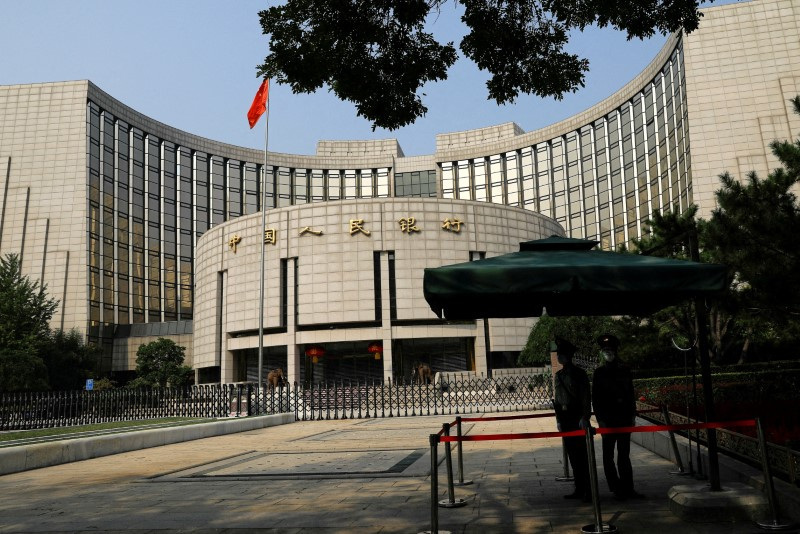China cuts 1-year lending benchmark but keeps 5-year unchanged
2023.08.20 22:18

© Reuters. FILE PHOTO: Paramilitary police officers stand guard in front of the headquarters of the People’s Bank of China, the central bank (PBOC), in Beijing, China September 30, 2022. REUTERS/Tingshu Wang/File Photo
SHANGHAI (Reuters) – China cut its one-year benchmark lending rate on Monday, as expected, as authorities seek to ramp up efforts to stimulate credit demand, but surprised markets by keeping the five-year rate unchanged.
The recovery in the world’s second-largest economy has faltered due to a worsening property slump, weak consumer spending and tumbling credit growth, which warranted further policy stimulus.
The one-year loan prime rate (LPR) was lowered by 10 basis points to 3.45% from 3.55% previously, while the five-year LPR was left at 4.20%.
In a Reuters poll of 35 market watchers, all participants predicted cuts to both rates.
Most new and outstanding loans in China are based on the one-year LPR, while the five-year rate influences the pricing of mortgages. China cut both LPRs in June to boost the economy.
The reduction in the one-year LPR came after the People’s Bank of China (PBOC) unexpectedly lowered its medium-term policy rate last week.
The medium-term lending facility (MLF) rate serves as a guide to the LPR and is widely read by markets as a precursor to future changes to the lending benchmarks.
China’s central bank has also pledged to keep liquidity reasonably ample and its policy “precise and forceful” to support the economic recovery, amid rising headwinds, according to its second-quarter monetary policy implementation report.
But the steady five-year tenor caught many traders and analysts off the guard, with some expecting the troubled property sector and rising default risks at some developers would have led to deeper cuts to the benchmarks.
“We interpret the status quo of five-year LPR was a signal that the Chinese banks are reluctant to cut rates at the expense of rate differential margin,” said Ken Cheung, chief Asian FX strategist at Mizuho Bank.
“It flagged a problem on the effectiveness of PBOC’s policy guidance pass-through into the market, and the Chinese authorities may be lacking effective tools to stimulate the property sector and economy via monetary easing.”
Cheung added that the unexpected rate outcome should be “negative to China growth outlook and the yuan exchange rate”.
The eased in early trade to 7.2978 per dollar, compared with the previous close of 7.2855.








